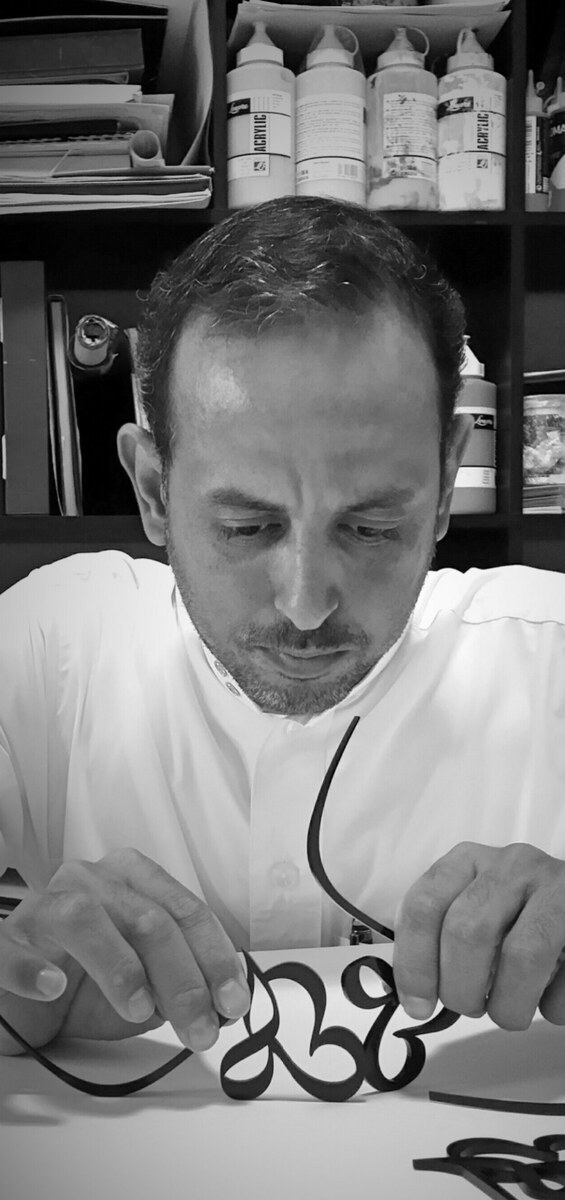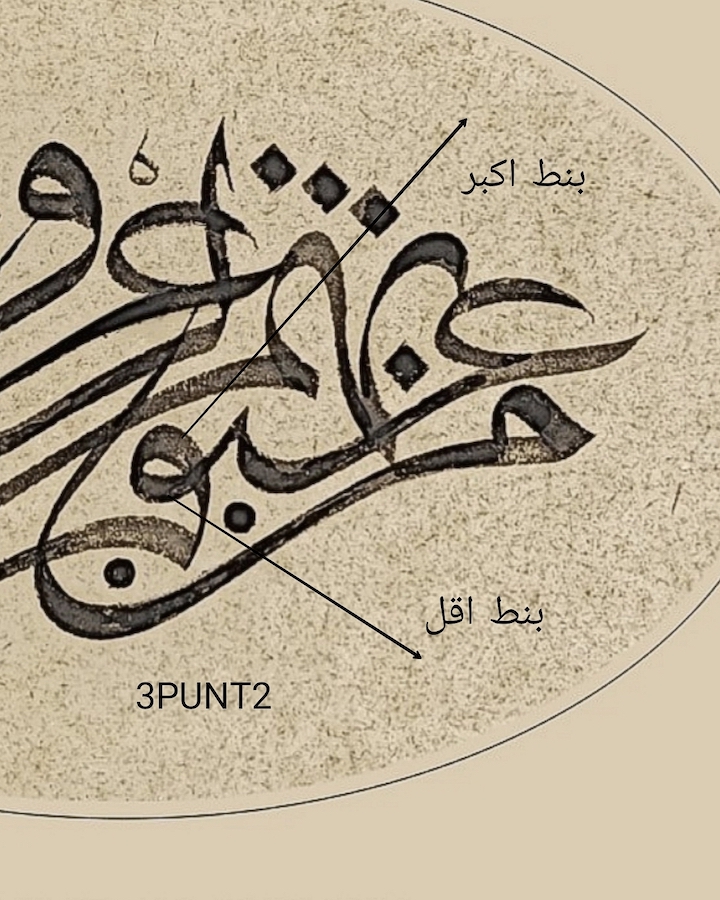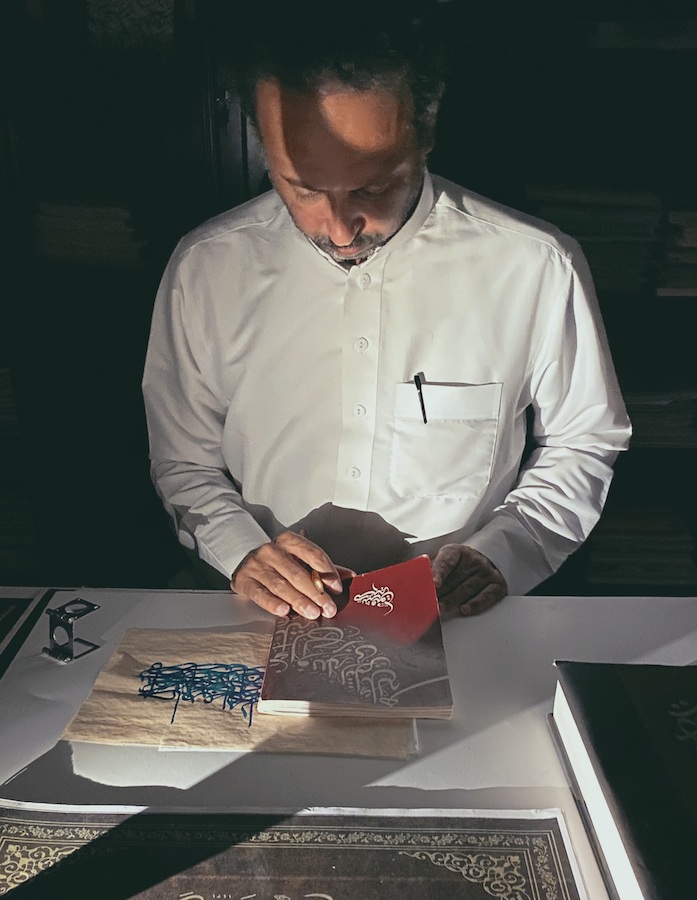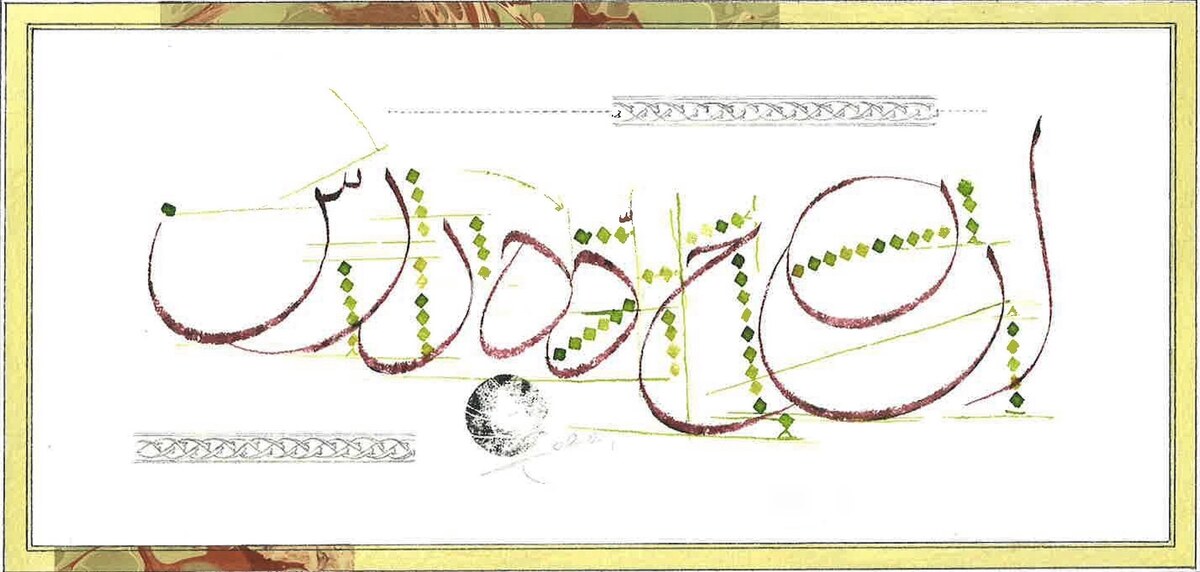DUBAI: Situated along a main road in AlUla’s AlJadidah Arts District is a handsome contemporary-style building made of corten steel, glass and polished concrete. Its rusty, orange-brown color and prominent build with intricate lattice façade is in striking contrast to the charming new style farm houses and more urban houses that dominate the Al-Jadidah or the “new town” of AlUla.
The building, designed by Gio Forma Studio, is a homage to the breezeblock used widely across buildings in the surrounding Al-Jadidah Arts District and it serves as the new Design Space AlUla that opened during the AlUla Arts Festival in February 2024.
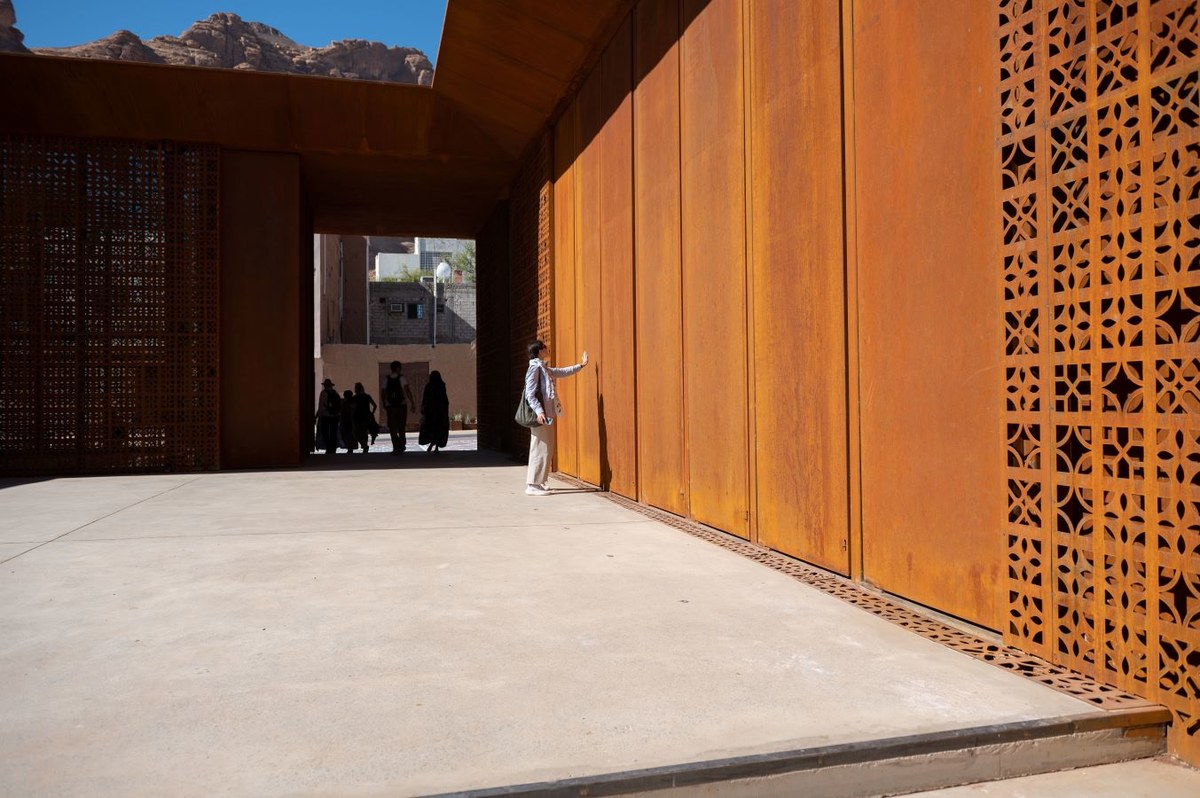
The building, designed by Gio Forma Studio, is a homage to the breezeblock used widely across buildings in the surrounding Al-Jadidah Arts District and it serves as the new Design Space AlUla that opened during the AlUla Arts Festival in February 2024. (Photo by Nicholas Jackson Photography)
The space, under the direction of Sara Ghani, also the curator of the gallery’s inaugural exhibition, provides exhibition, workshop and archive space, and is designed to foster collaboration among design professionals, students, and design lovers.
Design Space AlUla places emphasis on the natural materials and traditional building styles native to the AlUla region. The building itself is a reflection of local traditional building practices. Formed around a plaza, the luminous courtyard design is complemented by the exposed geometrical brickwork, taking the shape of the lattice façade that further brings light and natural ventilation into the building.
“Design Space AlUla commits to celebrating AlUla’s natural history and cultural heritage,” Ghani told Arab News. “It does so through a focus on the vernacular materials found throughout AlUla that can inspire a sustainable future.”
It aims to engage with both emerging and established design professionals, regionally and internationally to explore design principles and creative design processes within the backdrop of AlUla’s natural environment and cultural legacy.
The space is inclusive to all design disciplines from architecture and urban planning, to product and graphic design. It will also support and engage with the larger and local design community, while also highlighting the wider role of design in AlUla’s everyday life, cultural scene and wider economy.
“Our ambition is to fuel the design economy, provide resources to designers to explore and experiment, and be a place for visitors to research, explore and connect with the processes behind AlUla’s design journey,” said Ghani in a statement.
The inaugural exhibition, “Mawrid: Celebrating Inspired Design,” introduces the research and production process behind the design of 10 recent AlUla-inspired creations across design, architecture and urban planning. The show marks the first in an ongoing exhibition program, which launches on 15 Feb. and runs until June 1.
Projects explored in the exhibition include Gio Forma Studio/Black Engineering’s Maraya, a 9,740m² mirror-clad venue that blends with its awe-inspiring surroundings, reflective of the natural textures and colors of AlUla; the plans for the renovation of Madrasat Addeera, AlUla’s first arts and design centre, by UK-based Hopkins Architects; Roth Architecture’s Azulik Eco Resort which draws inspiration from the stories of wind and erosion, ensuring the project integrates well with its natural surroundings; SAL Architects’ renovation of the historic Ammar Bin Yasser Mosque, which collaborated closely with the community to ensure a respectful and harmonious transformation; and AlUla’s Cultural Oasis District Masterplan, guided by Prior + Partners in collaboration with Allies and Morrison.

Each project is driven by the mission and vision to uphold and champion the cultural and natural landscape that makes AlUla a region where communities, travelers, traders and pilgrims have for thousands of years gathered via the Incense Route.
Other exhibitors include finalists from the second edition of AlUla Design Award Imane Mellah, Teeb, Sara Kanoo and Shaddah Studio, and representation from the first edition of the AlUla Design Residency.
The residency is a five-month program in AlUla that brings together designers and experts to AlUla to work across multiple disciplines such as infrastructure development and architectural design, exploring public realm interventions and urban furniture, sustainability and local building materials.
The five design practices currently engaged in the residency are bahraini – danish from Bahrain and Denmark, Hall Haus from France, Studio Leo Orta from France, Studio Raw Material from India, and Leen Ajlan from Saudi Arabia.
“We are working on celebrating and showcasing different projects that have been done within various design areas,” adds Ghani to Arab News. “From micro to macro scale, the smallest scale of design such as graphic design, branding and project design to furniture design, architectural design and to the macro scale, including urban design, urban planning and master planning.”
“All of it showcases how inspirational AlUla is on a cultural level and through its natural landscape and how this greatly inspired designers,” she adds.
The exhibition also explores the visual identity for Design Space AlUla created by Clara Sancho Studio and design agency 29Letters from Madrid. The logo draws on a wide range of inspiration from across AlUla, from ancient inscriptions at Jabal Ikmah to the distinctive breezeblocks in AlJadidah and other architectural elements of AlUla’s more recent visual terrain.
Over time these varous projects will enter the archive of Design Space AlUla archive which will serve as a growing source of design inspiration as well as a living compendium of local design initiatives.
Additionally, the workshop and archive will host aspiring designers in AlUla’s resident community who wish to participate in the creative space.
“Design Space AlUla combines an archive, a gallery, and a workshop space where we showcase AlUla’s design initiatives and the design philosophy and the design journey that AlUla has been working towards for the past few years,” Ghani told Arab News. “AlUla has been working on developing its cultural scene for a long time. A lot of work has gone into the genre of design but it has never been showcased to the world. Now is the right time.”
















